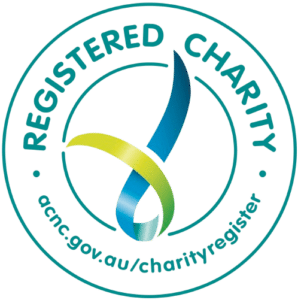
Supporting the varying needs of autistic people is a focus that researchers from HMRI and the University of Newcastle’s Family Interactions & Neurodevelopmental Lab (FIND LAB) are working collaboratively to achieve. With a focus on children and young people, the aim of their research is to study, promote and facilitate healthy development and wellbeing of those with a range of neurodevelopmental conditions.

Autism is a neurodevelopmental condition that has an estimated prevalence rate of 1 in 70 Australians. The condition is characterised by differences in the way an autistic person can behave, communicate, and interact socially. It is not an illness nor a disease.
The term “spectrum” refers to the wide range of differences, abilities, skills and behaviours autistic people have, and with no two autistic persons the same the support needs are variable.
Supporting the varying needs of autistic people is a focus that researchers from HMRI and the University of Newcastle’s Family Interactions & Neurodevelopmental Lab (FIND LAB) are working collaboratively to achieve. With a focus on children and young people, the aim of their research is to study, promote and facilitate healthy development and wellbeing of those with a range of neurodevelopmental conditions.
“We have found that there has been an increase in the number of studies using technology to support skill development although recent literature has shown that there are inconsistencies across the collection methods that researchers use. This means it can be difficult to understand if the programs are delivering in the way they are intended,” says Natalie Wall, who is a provisional psychologist and PhD candidate at the University of Newcastle.
With social interaction and in particular the recognition of facially expressed emotions a common difficulty for autistic children, the team recently engaged in a study which included the development of a game-like tablet app to be used to support this skill.
Ms Wall reported “in our project, we have kept technology at the forefront. We understand that apps and digital programs can be used alongside other allied health therapies. They can be used on-the-go and keep children engaged while learning new skills. Our interdisciplinary team designed an app for school-aged children on the spectrum to better support the interpretation of facial expressions.”.
There is still much to be understood about the differences in how autistic people label emotions based on viewing the faces of other people. Studies have found that autistic people often scan faces differently when compared to neurotypical people. “Neurotypical people scan faces in an inverted triangle across the most prominent areas of a face (eyes and mouth region) whereas autistic people have more variable scan paths,” Ms Wall said. Other review studies using brain imaging methods have identified that the differences are related to facial emotion processing that happens in the brain. It is worth noting that although autistic people can have difficulty understanding neurotypical people, neurotypical people can also have difficulty understanding autistic people. This is known as the ‘double empathy problem’, a term described by Damian Milton (2012).
As part of this study, the team also believe it is important to seek out the thoughts and opinions of e-technology from parents and caregivers of autistic children. Ms Wall recently participated in an Autism Cooperative Research Centre (CRC) program called the Sylvia Rodger Academy (Research Program). “The program aims to upskill autistic adults and autism researchers in research co-production. Upon reflecting on some of the assigned readings, I realised that we were lacking community stakeholder input, more specifically parent and caregiver input. Parents and caregivers are with their children more frequently than service providers and know what types of programs their children engage in. Through seeking their opinions, I hope it will ensure future developments of digital programs are relevant and interesting for autistic children,” she said.
If you are interested in learning more about the current and past research projects that the Interactions & Neurodevelopmental Lab are working on, including current recruiting studies, please visit www.findlab.net.au
HMRI would like to acknowledge the Traditional Custodians of the land on which we work and live, the Awabakal and Worimi peoples, and pay our respects to Elders past and present. We recognise and respect their cultural heritage and beliefs and their continued connection to their land.

Hunter Medical Research Institute
We’re taking healthy further.
Locked Bag 1000
New Lambton
NSW, Australia, 2305



This site is protected by reCAPTCHA and the Google Privacy Policy and Terms of Service apply.
Copyright © 2024 Hunter Medical Research Institute | ABN: 27 081 436 919
Site by Marlin Communications
